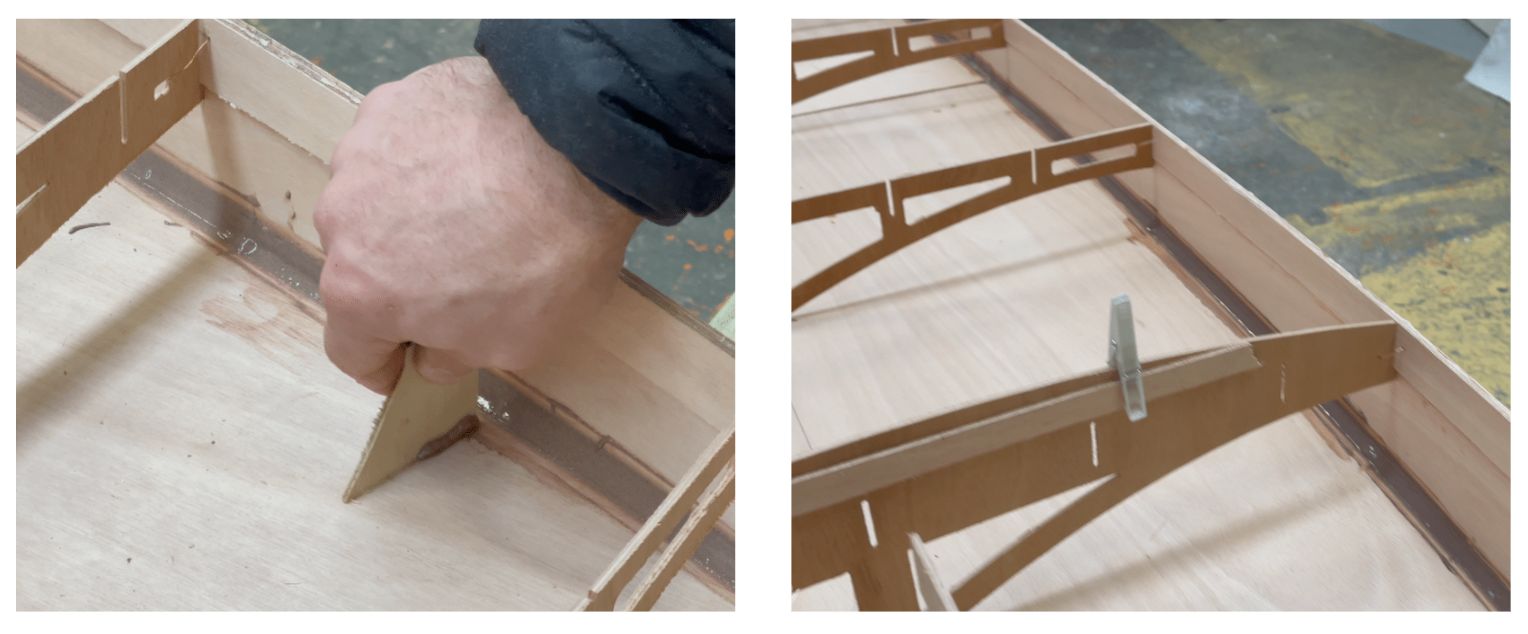Epoxy resin is known for its strong adhesive qualities, making it a versatile product in many industries. It offers resistance to heat and chemical applications, making it an ideal product for anyone needing a strong hold under pressure. Epoxy is also a durable product which can be used with various materials, including: wood, fabric, glass, china or metal.
Epoxy Resin for wooden paddle board construction
One of the most common uses of epoxy resin is for marine craft construction; e.g. boats, paddle boards, canoes and kayaks. That’s because the strong-properties of the epoxy are perfect for joining wood pieces together and waterproofing your board.

What are epoxy fillets?
Epoxy fillets are a continuous bead of thickened epoxy mixture applied to the angle created between two parts, in our case the hull side and hull bottom panels.
It increases the surface area of the bond and serves as a structural adhesive and brace. Filleting creates an effective glue joint that requires no fasteners of any kind and can result in a joint that is as strong as the parts being joined together. The fillet also creates a rounded surface for the fibreglass tape to follow adding even more strength to the joint.
Because epoxy can be thickened with high-density fillers into a semi-solid consistency it can fill large gaps in wood joints, without any loss of strength, saving a great deal of time labour for the amateur board builder.
What do I need for making epoxy fillets?
- Face mask
- Mixing cups
- Wooden stick stirrers
- Disposable gloves
- Scales to mix epoxy (if measuring by weight)
- Scissors
- Scraper
- Vinegar & paper towel for clean up
- Ziplock bags
- Rubber bands
- Filleting tool with correct radius
How to make epoxy fillets...
-
Surface preparation - the plywood should be clean, dry and dust free. Check the hull side to bottom joints are smooth without any gaps.
-
Mixing the epoxy - refer to the manufacturers instructions when mixing epoxy, however I always stir for at least 2-3 minutes per batch to ensure every resin molecule finds a hardener molecule.
-
Mix in wood flour/micro balloons - to get a smooth peanut butter consistency.
-
Put thickened epoxy mixture into a ziplock bag - and cut a small section off the corner.
-
Squeeze a bead of epoxy into the joint to be filleted - taking care when applying the filleting mix greatly reduces clean up.
-
Shaping the fillet - using a rounded filleting tool to create a smooth curve between the joining surfaces.
- Cleaning up the fillet - clean away an excess epoxy mixture with a narrow scraper, wiping away the epoxy into a cup. It is important there is no residual filleting mixture left behind so the fibreglass has a smooth surface to bond with.



